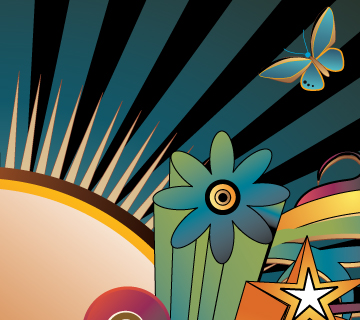We consult with you regarding your project, and derive an understanding about your company or brand. We will listen to your ideas, and then offer ours. Things like, your customers, markets, past efforts, scope of application, and your preferences for colour and symbology are generally discussed. From this we will determine a direction forward together and proceed to conceptualise a design.
Enrich Your Image
with aptly designed professional digital and print creations
Visual communications have always been extremely important in creating the right perception and image for your company or brand. In the contemporary setting, your brand image needs to be distinct and unique, and speak to it’s primary target audience in the right language. In providing design concepts to clients, many designers and agencies will often attempt to show off their artsy design skills at the expense of what’s best for the project. This can be seen on a daily basis, when we look at advertising and marketing that just doesn’t make sense or feel right. Our policy has always been to put the client first, and to stay on point. We don’t do fancy for the sake of fancy. We provide apt designs weather simple and elegant, or with extravagance and flair, whatever best suits the purpose of the project, and who it aims to attract.
When taking on a project, we always deliver to our clients, a result that meets or exceeds expectation and satisfaction. Sometimes this means redesigning and proofing until this is achieved …and we’re happy to oblige.
At wwwowww, we use only the very best computer hardware and industry leading professional software in our production environment. This means that we are professional and efficient in our work, and compatible to work with all the leading service providers in the print and signage industry, as well as the leading creative agencies and publishers.
The Graphic Design Process How we produce a professional graphic design product
Now that we understand things a bit better, we can get to work with implementing the concept digitally using either vector or raster graphics Don’t worry, we’ll explain this further on), or a mix of both, depending on the type of project being developed. We normally provide a couple of visual concepts to our clients in order to determine if we’re on the right track. Remember, it’s all about your company or brand, and who better to understand that than you. So, once we have presented our initial design drafts, we again consult to more accurately determine the direction to take, and decide on a particular concept, or redirection. This effectively narrows down the idea to a definitive route and destination in terms of concluding our designs to final proof, or coming up with completely new ones, effectively repeating this step.
From determining our design destination from the concept stage, we now press on with polishing up our preferred concept and readying it for final proof. This means that we will ensure everything falls within the guidelines of what was learned and determined from our initial presentation. Once our work meets our criteria and checklist, we will provide you with a 2nd proof. It will then be for you to advise of final amendments, or provide approval.
After you sign off on our 2nd proof, or we have applied any necessary amendments, your designs are put through their final stages. This essentially means a final cleanup and inspection of the artwork to ensure that it complies with industry standards for output and in the case of corporate identity, it must be suitable for broad spectrum application.
Correct output of your designs, is essential to ensure that you can use them in a variety of scenarios and applications, especially in terms of corporate identity. Many designs that are procured by a client, may need to be available for use in both print and digital media. This would mean providing the designs in both CMYK and RGB formats, and sometimes with the inclusion of spot colours. We will always ensure that the output formats meet the needs of application and provide multiple versions if need be.
Once we have everything ready, we will provide you with your artwork in all appropriate formats. In the case of corporate identity, we provide our clients with a multitude of formats including the open file in .ai (Adobe illustrator) format. Two versions of .pdf format files are also provided. One for general use in a compact file size, and one that complies to the PDFX standards for print industry application. Any colour swatches used are also specified along with the preferred colour management policies. If required, we will also provide you with the appropriate versions that are required for use in specialised print applications such as packaging or flexo-printed labels. All this is necessary in ensuring that artwork can be used in any scenario when needed, and that you essentially get what you paid for. Things like this pretty much separate the men from the boys in terms of providing professional graphic design services.
A designer knows he has achieved perfection not when there is nothing left to add, but when there is nothing left to take away.
– Antoine de Saint-Exupery | Writer, Poet, and Pioneering Aviator
A designer knows he has achieved perfection not when there is nothing left to add, but when there is nothing left to take away.
– Antoine de Saint-Exupery | Writer, Poet, and Pioneering Aviator
Raster vs Vector
some info about the basic graphics formats
There are basically two types of graphics formats used in graphic design for print and web applications. Professional graphic designers know when and how to use either formatindependently, or in combinations. The examples below show the core difference between the formats when they are enlarged. Ideally, any raster graphics that are applied to printmust conform to certain standards in order for the image to be clear in a magazine or other application. If these standards are ignored, then the result can be quite ugly. This is easy to spot, and is often the common distinction of amateurs. By using our professional graphic design service and print facilitation, best practices and standards will always be adhered to, and you can be assured of high quality results every time.
Raster graphics are resolution dependent, and are composed of often millions of coloured dots called pixels. They cannot scale up to an arbitrary resolution without loss of apparent quality. This property contrasts with the capabilities of vector graphics, which easily scale up to the quality of the device rendering them. Raster graphics deal more practically than vector graphics with photographs and photo-realistic images.


Vector graphics are resolution independent and can be scaled to practically any size without any image degradation. They use geometrical primitives such as points, lines, curves, and shapes or polygons, which are all based on mathematical expressions, to represent images. Vector graphics often serve better for typesetting and core graphic design. When having a logo designed, ensure to request the original vector graphic file.
Get A Quotation
we offer a range of great value for money packages
Have a look at our basic packages to get an idea of the costs involved. Should your project exceed the scope of these packages, then we will provide you with an appropriate quotation following your detailed brief, or our consultation with you.
